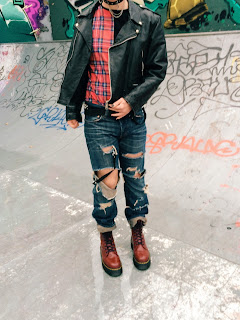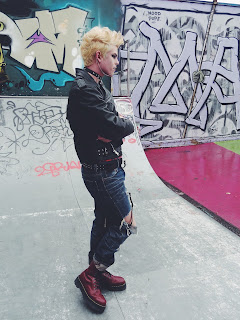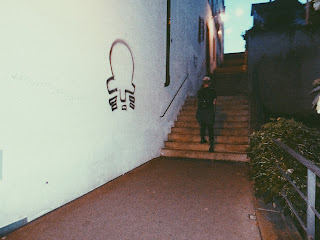Context
Often
associated with anarchy, the punk subculture emerged in Britain, Australia, and
the USA in the 1970s, its exact origin unknown. Like most subcultures it
has a corresponding music style, in this case a very loud and aggressive punk
rock, typically played in bands, featuring distorted guitar and noisy drumming.
The punk subculture is very much known for its DIY approach to fashion, where
punks would stay away from mainstream labels, preferring to produce their own
music themselves. Politically, the punk ideology is predominately individual
freedom, and thus anti-establishmentarianism. Punks typically believe in
anti-racism, anti-sexism, and anti-homophobia, anti-militarism,
anti-capitalism, and anti-nationalism. In terms of clothing, punk fashion was
all about an idea of altering everyday objects for aesthetic effect, where
clothing was ripped and adorned with spikes. The most famous punk designer is
Vivienne Westwood, famous for making clothes for Malcom McLaren’s boutique in
the King’s Road, now referred to as SEX. Punk hair is iconic in its vibrant
color and spiky shape.
Outfit
I wanted my
outfit to be as bold as possible, to be as characteristically punk as possible,
and to convey a sense of DIY as much as possible. The characteristically punk
aspects of the outfits are the accessories, each of which features its own
closeup above: the spiked belt, the collar embedded with chains and studs, the
chains attached to my jeans and the chain attaching my nose and ear piercing,
all of which are very typical punk and embody the idea of adapting fashion for
a rebellious effect. I also wore a heavy leather jacket which itself contained
lots of metal buckles zips and chains – punks would typically adorn their
leather jackets with band logos or the symbol for anarchy. My jeans are also
very punk being obviously and deliberately destroyed, where I have integrated a
chain, almost as if it were holding them together. I also made sure to include
typical punk tartan somewhere, my t-shirt being sewn half black half tartan,
thereby also incorporating the DIY aspect further. The shoes I wore were my
platform red Dr Martens which are bold and colorful, but also historically
accurate as Dr Martens did become symbolic punk footwear.
Hair and makeup
In terms of
hair I did my best to replicate a Mohawk on what I had, where I smoothed down
the sides as much as possible and spiked up the top and back – it wasn’t long
enough to come to one specific point as I would have preferred but the spiky
effect is still present. I made my eyebrows colorful, very angular, and
diagonally straight, in complete defiance of their natural state, for effect. For
my eyes I went bold but very clean and precise, creating a thick
over-exaggerated cat's eye, making it obvious that it was very deliberate. I
adorned this with a decorative line just for emphasis contrasting with the white
I used on my waterline. I wore a bold purple lip color, also attention grabbing
and bold, but this time also colorful. I contoured heavily so that my face
would appear more angular and thus more in sync with my angular brows, hair,
and eye makeup.
Clothing choices:
Leather jacket: vintage, similar here
Jeans: DIY from similar to this
Dr Martens: here
Studded belt: similar here
Collar: similar here
Chains/cuffs: came with these









































